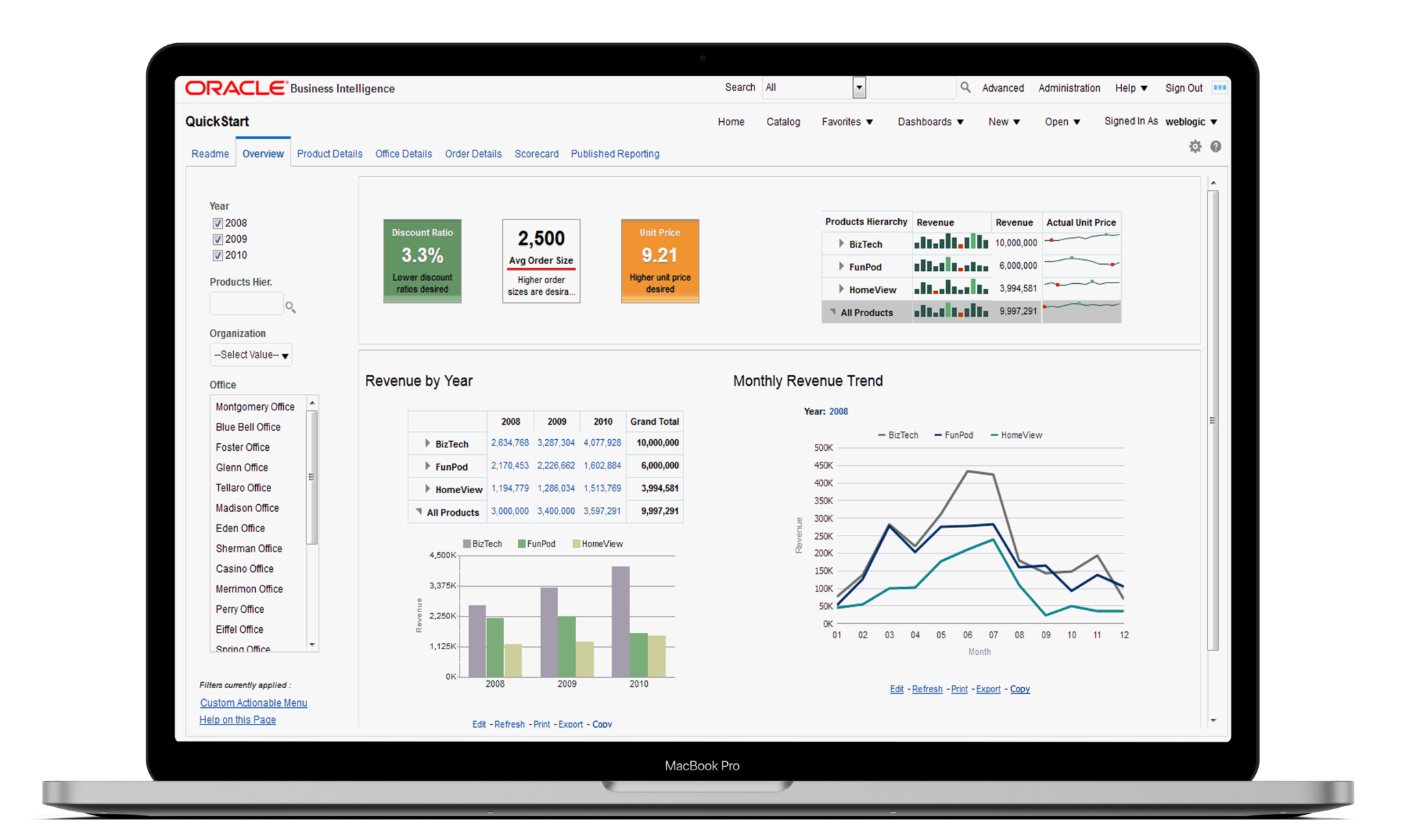Building Logical Table Sources
- Managing Logical Table Sources
- Adding Multiple logical table sources to a logical table
- Specifying logical content
Adding calculations to a fact
- Creating new calculation measures based on existing logical columns
- Creating new calculation measures based on physical columns
- Creating new calculation measures using the Calculation Wizard
- Creating measures using functions
Working with Logical Dimensions
- Creating logical dimension hierarchies
- Creating level-based measures
- Creating share measures
- Creating dimension-specific aggregation rules
- Creating presentation hierarchies
- Creating parent-child hierarchies
- Using calculated members
Using Aggregates
- Modeling aggregate tables to improve query performance
- Setting the number of elements in a hierarchy
- Testing aggregate navigation
- Using the Aggregate Persistence Wizard
Using Partitions and Fragments
- Exploring partition types
- Modeling partitions in an Oracle BI repository
- Using the Calculation Wizard to create derived measures
Using Repository Variables
- Creating session variables
- Creating repository variables
- Creating initialization blocks
- Using the Variable Manager
- Using dynamic repository variables as filters






